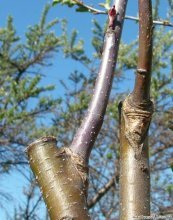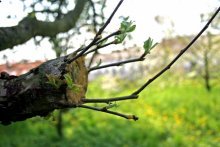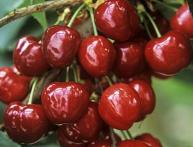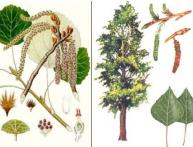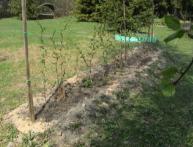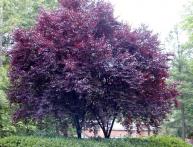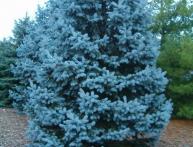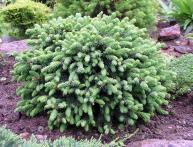Grafting trees in spring: methods and their description
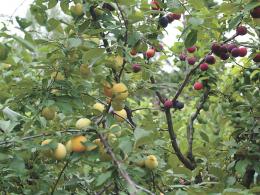
Grafting is a procedure that allows you to obtain new crop varieties on one trunk. For successful vaccination, all recommendations must be followed. It is important not only to perform the procedure correctly, but also to prepare stalk.
Content:
- Tree grafting: advantages of this method
- Preparing for vaccination
- How to vaccinate in spring: basic methods
Tree grafting: advantages of this method
Trees are grafted for various purposes. With the help of grafting you can get a high yield with excellent taste. This agrotechnical technique allows you to preserve the beneficial properties of a varietal tree, which may be lost during pollination or the formation of seed material.
If you take a cutting from a tree, the fruits will appear only after a few years. However, grafting to a rooted shoot will shorten the period of fruit appearance by 2 times. This procedure makes it possible to grow varieties that are not adapted to specific climatic conditions. The root system of the rootstock is hardy and the plant is resistant to frost and drought.
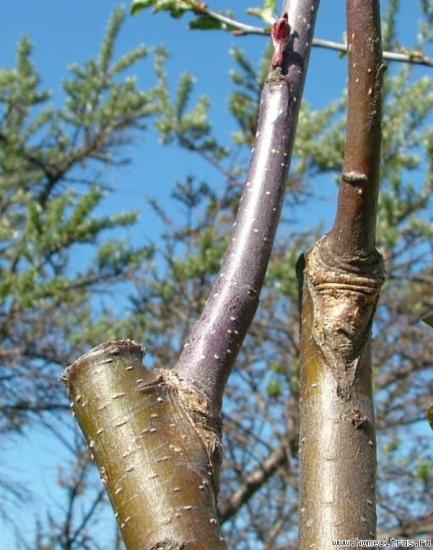
If you choose the right rootstock, you can grow a dwarf plant. Then the fruits will ripen faster. You can graft 2-3 varieties onto one trunk at once. As a result, from one fruit tree you can collect different varieties. This saves space on the site. The only negative is that there will be fewer fruits.There are times when a young tree is exposed to frost or damaged by pests and rodents. In order for the tree to “come to life” again, a bridge grafting is done.
The procedure should be performed in early spring, before the buds swell. The optimal time for this is the beginning of March. If you graft before the sap begins to flow, the cutting may not take root. If you carry out the procedure too early, you can harm the tree.
Preparing for vaccination
A few days before the procedure, the grafted trees must be watered. This will increase sap flow and promote better bark separation, which greatly facilitates subsequent work. At the place where the grafting will be performed, you need to remove the leaves and stems.
For grafting, healthy cuttings and rootstock should be taken. It is recommended to prepare cuttings for grafting in late autumn. Their length should be at least 30-40 cm, and their diameter should be about 7 mm. In this case, there should be 4-5 buds on one cutting. It is advisable to cut the scion from a young tree.
It is very important to preserve them during the winter. Cuttings carefully cut, processed, wrapped in film or burlap and left in a cold place. If the winter was not very frosty, then the cuttings can be prepared in the spring before the buds swell. The day before grafting, update the sections and place them in clean water in a cool place. During this time, the cuttings will be saturated with moisture, which significantly affects survival rate.
What is needed for vaccination
For the procedure you will need garden pruners, a knife, a small ax and a brush. Any binding material is used to attach the cuttings and rootstock. For this purpose, you can take linen twine or linden sponge.You can also use duct tape or adhesive tape, but removing it may damage the bark.
Video about proper vaccination:
Can be tied with polyethylene. Cut any material into ribbons, the length of which will be 30-40 cm and the width 1.5 cm. If you plan to tie with twine or sponge, then use garden var based on rosin. Instead of varnish, you can take regular plasticine.
How to vaccinate in spring: basic methods
There are several ways to perform vaccination.
For the bark. This method is used if the thickness of the rootstock and scion is very different. Cut the bark and insert a cutting into this place, first make a long cut on it. When using this method, the rootstock is less susceptible to injury and rapid fusion with the cutting occurs. On a large rootstock, an experienced gardener can graft several cuttings.
In the cut. Grafting can be done into the rootstock regardless of thickness. Cut a slot on the tree trunk so that it narrows downward. Cutting with two buds trim on each side and insert into the cut. After this, tie it and lubricate it with garden varnish.
Into the cleft It is recommended to use if the rootstock has rough bark or the last time grafting by other methods was unsuccessful. The method is very good for rootstock thickness more than 5 cm.
Budding. A single bud, formed last summer, is taken from cuttings prepared in the fall and grafted onto the trunk of another tree. This method is also called sprouting eye budding.
Copulation. This method is used when the rootstock and scion are of the same thickness. Make oblique cuts on them and connect. Connect the joint and coat it with varnish.Sometimes the improved copulation method is used, in which notches are made to tightly connect the scion and rootstock.
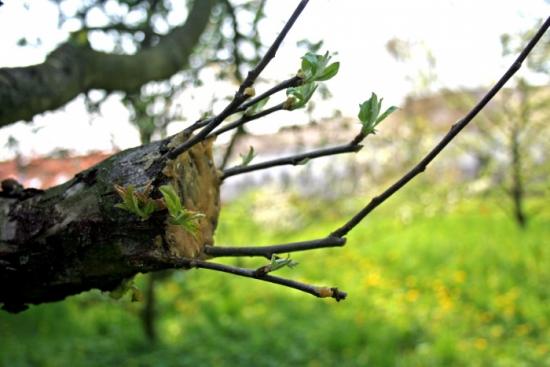
Ablactation. This method involves the engraftment of two adjacent plants. On trees, cut off the bark with a small part of the wood. At the cut site, make tongues in the form of a split and connect them together. When the scion begins to grow, it needs to be cut off from the root.
If you do vaccination in the spring, the cuttings will develop throughout the summer. When choosing a scion method, you should take into account climatic conditions, the variety and size of the tree, and the time of year.

